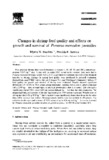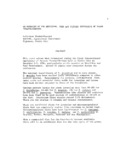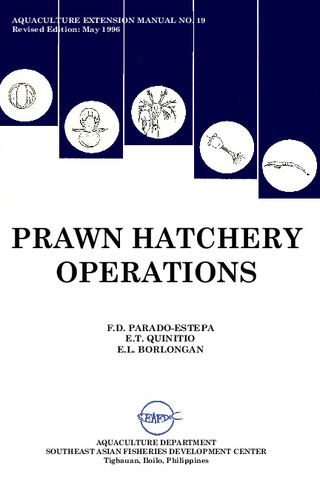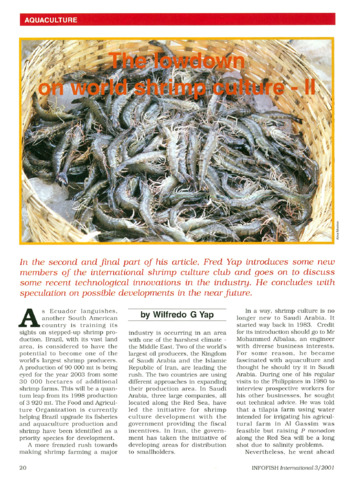Changes in shrimp feed quality and effects on growth and survival of Penaeus monodon juveniles
Share
Abstract
Five practical shrimp diets were formulated to contain 1, 10, 20, 50, and 100 g tetraethoxypropane (TEP) kg−1 diet. A diet with no added TEP served as the control. Diets were fed to Penaeus monodon (average weight 4.84 ± 0.11 g) juveniles to determine the level of fat oxidation tolerable to shrimp. Changes in shrimp feed quality were monitored by physical evaluation, thiobarbituric acid (TBA) values, fatty acid composition, and histological examination. Effects of feed quality on growth and survival of shrimp were evaluated. Results showed significant differences (P < 0.05) in TBA values among treatments. Animals fed on diet 6, which contained 100 g TEP kg−1 diet, showed signs of physical deterioration after 6–8 weeks. This diet had a significantly higher TBA value (1262 mg malonaldehyde kg−1 fat) than the other treatments. The unsaturated fatty acid content of the diet decreased as its TEP content increased. Weight gains of shrimp fed diet 5 (50 g TEP kg−1 diet) and diet 6 were significantly lower than those fed the other diets while survival was similar. Hepatopancreatic lesions were not evident in all samples. Fat oxidation levels expressed in terms of TBA values of up to 828 mg mal kg−1 fat can be tolerated by Penaeus monodon juveniles in terms of growth response.
Suggested Citation
Bautista, M. N., & Subosa, P. F. (1997). Changes in shrimp feed quality and effects on growth and survival of Penaeus monodon juveniles. Aquaculture , 151(1-4), 121-129. https://doi.org/10.1016/S0044-8486(96)01477-9
Taxonomic term
Collections
- AQD Journal Articles [1249]
Related items
Showing items related by title, author, creator and subject.
-
An overview of the nutrition, feed and feeding techniques of prawn penaeid/shrimps
Piedad-Pascual, Felicitas (Philippine Council for Aquatic and Marine Research and Development, 1989)This paper echoes what transpired during the first International Conference of Penaeid Prawns/Shrimps held in Iloilo City in December 4-7, 1984, particularly on the Nutrition nd Feed Development. Around 25 papers were ... -
Prawn hatchery operations
Parado-Estepa, Fe D.; Quinitio, Emilia T.; Borlongan, Emeterio L. (Aquaculture Department, Southeast Asian Fisheries Development Center, 1996-05)The manual, an updated version of the 1984 SEAFDEC/AQD manual, presents the underlying principles and step-by-step instructions of prawn larval and post-larval rearing. The techniques described are not only applicable to ... -
The lowdown on world shrimp culture - II
Yap, Wilfredo G. (INFOFISH, 2001)This paper introduces some new members of the international shrimp culture club and goes on to discuss some recent technological innovations in the industry, particularly the polyculture of tilapia (mainly Oreochromis ...




